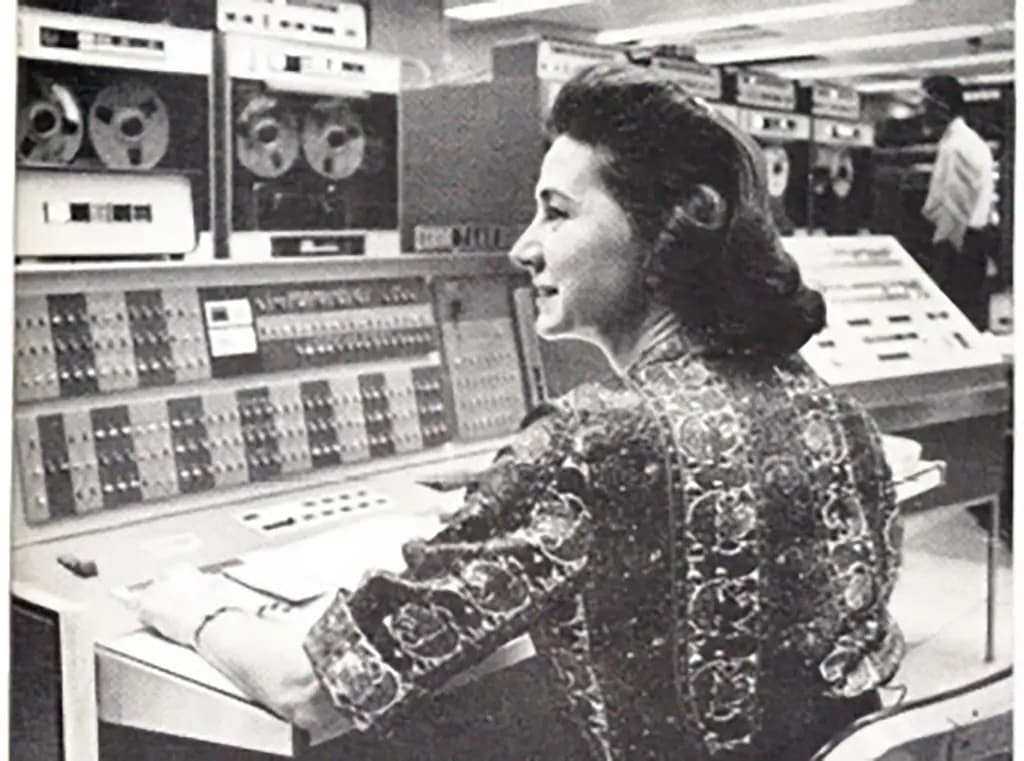Let’s put women back into the history books of computing

“You don’t look like an engineer!” “She can’t be an engineer. She’s too pretty.” “But, you look normal”. In 2015, Isis Anchalee started a tweetstorm with her #iLookLikeAnEngineer tweet. Anchalee was responding to internet chatter commenting on her company’s ad campaign using her image to recruit new software engineers. Some insisted that she must have been a model and not a real engineer.
As I contemplate what to write in this blog post for Women’s History Month in 2022, I can’t help but think back to my own experiences. I, too, have been told – even recently – that I don’t look like an engineer. So, what exactly is a software engineer supposed to look like?
Apparently, a software engineer is supposed to be male and geeky. In a recent survey of 254 undergraduates from the University of Washington and Stanford University, respondents described typical characteristics of computer science students as male, intelligent, lacking social skills and singularly focused on computers. Some respondents even described them as pale, thin, and lacking personal hygiene. We are all familiar with the anti-social computer geek stereotype, which has been relentlessly reinforced by Hollywood.
What’s frustrating is how ingrained this image of the computer programmer is in the popular psyche considering that it is only a recent phenomenon. When I studied computer science in college in the mid-1980s, I thought it was perfectly normal for women to be software engineers. On average, women made up almost 40% of computer science majors at the time. This is for a field that didn’t start awarding CS degrees in significant numbers until the 1960s. Furthermore, few today seem to know that the term “computer” originally referred to a profession. In fact, women were the pioneers of that profession, serving as the first human computers at research organizations like Bell Labs, the Jet Propulsion Laboratory (JPL) and NASA.
The women we have forgotten
In the 1940s at JPL, women computers were the norm and not the exception. They were responsible for performing the complex calculations required for making rockets fly before the days of digital computing. AT&T started its research into mathematics with the hiring of Sallie Mead in 1915. And when AT&T and Western Electric founded Bell Labs, women formed the core of the mathematics department in the new organization.
Much of the most important early work in computing were performed by women. Gwen Hansen and Wanda Mammel were co-creators of Bell Labs’ first computer operating system, BESYS, while Dolores Leagus and Ruth Weiss co-created the first programming languages used at Bell Labs, L1 and L2 respectively, which were predecessors of Fortran. Bell Labs’ Erna Schneider Hoover received one of the first software patents issued. The first computer programmers of the first electronic computer, the ENIAC, were six women human computers. Sister Mary Kenneth Keller, a Roman Catholic nun, received one of the first two PhDs ever awarded in computer science. She went on to help create the BASIC language that millions worldwide use as an entry point into programming. And the term “software engineering” was coined by none other than Margaret Hamilton, who headed up the development of the onboard flight systems software for NASA’s Apollo program.

These women were pioneers in computer science and should be role models to generations of women – and men – in technical fields. Yet these women aren’t the images we are presented with when we talk about innovation and achievement in computing. Today, society has completely forgotten significant parts of computing history.
Even in the rare instances where women’s contributions to computing are illuminated, they are often ignored. In 2017, an employee at Google sent out a memo questioning why Google had diversity targets to increase the number of women in computing. He suggested that perhaps women were not biologically skilled or inclined to do computing work. This memo came out just after the 2016 release of the film Hidden Figures, which told the story of black female mathematicians like Dorothy Vaughn working as human computers – and later as computer programmers – in the early days of NASA.
This stereotype of the male programmer is not only historically inaccurate, it has become a self-fulfilling prophesy, leading to a precipitous drop in the number of women in computing. By 2010, computer science degrees awarded to women fell below 20% where it has hovered for the past years. The stereotype is not just repulsive to women – and many men as well – but it has given some men in tech an excuse for bad behavior that has only further excluded women. Gamergate best epitomizes this misogyny. I was absolutely stunned when I learned about this online harassment campaign in the video gaming community. Essentially, it was a backlash against diversifying the industry. Some men simply didn’t want to welcome women into what they felt was their domain so they sent rape and death threats to female gaming developers and journalists. They “swatted” – made prank 911 emergency service calls – to the women’s homes. And they “doxed” women programmers by maliciously searching for and publishing their private or identifying information on the internet. Some women at the receiving end of Gamergate literally had go into hiding for their own physical safety.
Break the bias
Let’s put women back into the history books of computing. The image of the computer programmer changed once so it can change again. Let’s revive the societal perception that assumes women can and do excel in the computing sciences as proven by our past.

International Women’s Day is March 8, and I am asking for your help to #BreakTheBias. Technologists like to believe that we work in a meritocratic manner. We base our conclusions on facts and not wishes, wants or mere preferences. If we are to be truly meritocratic then we cannot erase or minimize the contributions of people simply because they don’t fit the stereotype du jour.
Join me in erasing today’s false stereotypes that are not just historically and culturally inaccurate but also offensive to women and disrespectful to men. Isis Anchalee, Dorothy Vaughn, Erna Schneider Hoover, Gwen Hansen and Margaret Hamilton are the faces we need to see representing computing. Only by fundamentally changing the image of the computer programmer can we welcome women back into the field of computing.
Learn what inspires the women innovators at Nokia
Middle photo shows Gwen Hansen working on BESYS, the very first Bell Labs operating system. Hansen, along with Wanda Mammel, co-created BESYS in 1957.
